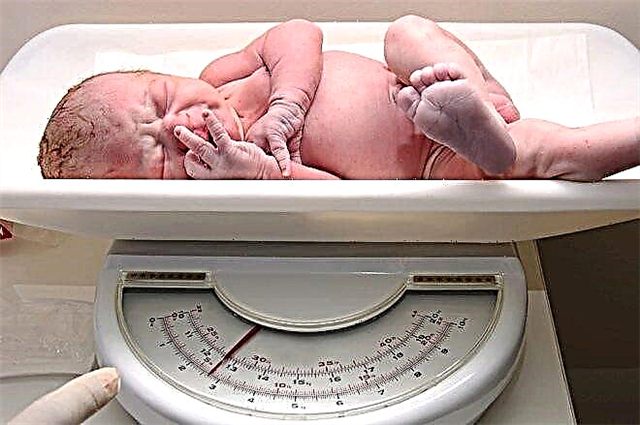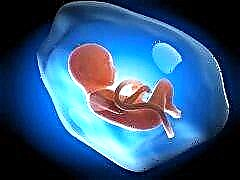
The weight of a child at birth is one of the criteria for assessing his condition. And therefore it is not surprising that future mothers are very interested in the weight with which a son or daughter will be born. This article will discuss how the weight of the fetus increases by week, as well as what factors it depends on.
Rates of growth
During the first trimester of pregnancy, the process of embryogenesis takes place - during this time all organs and systems, tissues are formed in the embryo, and up to 10-12 weeks, the development of different embryos has almost the same characteristics - the growth of a child in the womb is close to uniform standards. After 12 weeks, the development of babies acquires an individuality provided for by heredity, genetic information (there are larger and smaller people, tall and short, with a large or small head, etc.). And the closer to the end of pregnancy, the more individual characteristics your baby has.
Until 8 weeks of gestation, the question of the growth of the embryo does not rise, it cannot be measured due to its too small size, and ultrasound specialists measure only the diameter of the ovum and CTE - the coccygeal-parietal size, which in no way indicates weight gain.

Active weight gain in the fetus begins after embryogenesis is completed and all organs and systems are fully formed (after 11–12 weeks).
By the middle of the second trimester, the child begins to actively gain subcutaneous fat, and the weight gain becomes even more significant and intense.
The fastest growth rates are observed in the final, third trimester. At this time, the child becomes cramped, he can no longer move actively in the uterus. The last week before childbirth is characterized by a small increase - the baby is fully formed and ready to meet his parents.
In the last third of pregnancy, gender differences also appear: girls begin to gain weight a little more slowly than boys.
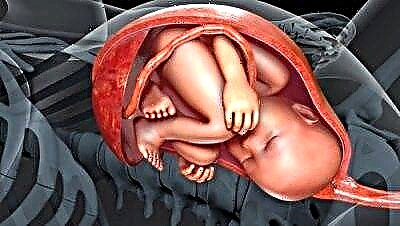
Influencing factors
How exactly the baby will gain weight, what will be the weekly weight gain and the final birth weight, depends on heredity. Large parents are more likely to give birth to a large baby, while asthenic men and women usually have the same miniature babies. In this, the expectant mother cannot change anything - information about the physique and constitution is embedded in the DNA of the baby on the day of his conception.
But there are concomitant factors that are not to the same extent, but also affect how much the baby weighs.
- Mom's nutrition - with a balanced nutrition of a woman, it is difficult for a child to gain extra grams, since he receives all the necessary substances in the right amount with the blood. When overeating, addicted to carbohydrates, sweets, the weight of babies also quickly becomes large, because they produce little of their own insulin. With insufficient maternal nutrition, the baby also has a deficiency of nutrients, and its weight may deviate from that laid down by the genetic program.
- Smoking mother while carrying a fetus - seven out of ten pregnant women who smoke have children with malnutrition.
- Woman's lifestyle - the weight of the child can be affected by the mother's worries and stress, lack of sleep, hard work, the harmful effects of poisons and toxins.
- Diseases of the mother - with diabetes mellitus, a woman is dozens of times more likely to develop a large fetus, and chronic ailments of the kidneys and heart can lead to malnutrition (low weight).
- Multiple pregnancy and other features of pregnancy - against the background of the threat of miscarriage during pathological gestation, the fetus usually gains weight less intensely, and when carrying twins or triplets, the size (height and weight) of children in the womb is less than the average for physiological reasons.
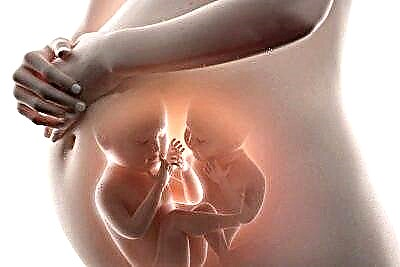
The rate of fetal body weight and the rate of weight gain are relative concepts, therefore, an analysis of heredity, anamnesis of the pregnant woman and the characteristics of the course of the gestational age are required.
Payment
To determine the estimated weight of the baby in the mother's womb, several formulas are used that can be used not only by obstetricians, but also by future mothers themselves. It is not hard.
According to the Lankowitz formula
To calculate, you will need two indicators - the abdominal circumference of the expectant mother and the height of the uterine fundus (coolant and VSDM). You can find these data in the exchange card, the doctor measures these indicators every time the expectant mother visits the antenatal clinic. Take the ones listed last.

You also need to know your height and weight. The formula is: (VSDM + coolant + height + weight) x 10
Example: gestational age is 29 weeks, OB = 110, VSDM = 29, height = 160 cm, weight = 65 kg. Multiplying the sum of the numbers by 10, we get the estimated weight of the baby, equal to 3640 grams.
The permissible error of the method is plus / minus 0.5 kilograms.
According to the Bublchenko formula
The mother's body weight is the main indicator. The formula is: (Weight / 200) x 10
That is, in a woman weighing 80 kg, a baby according to this formula weighs about 4 kilograms. The permissible error is plus / minus a kilogram. This makes the formula inconvenient for accurate representation, and therefore specialists do not use this method of calculation.
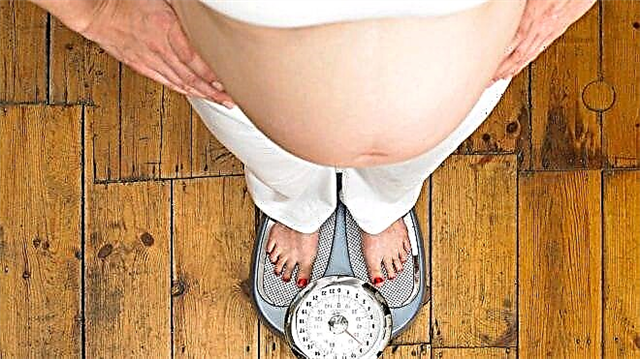
According to Yakubova's formula
In this calculation, again, the data on the coolant and VSDM from the exchange card will help. The formula is as follows: (VSDM + coolant) / 4) x 100.
With a standing height of the fundus of the uterus equal to 30 and a circumference of 110, it turns out that the baby weighs exactly 3.5 kilograms.
The formula is considered quite accurate, but only for women with a normal constitution, with maternal obesity, the data can be very different from reality.
According to the Jordania formula
(ОЖ х ВСДМ) - this means that two values from the exchange card just need to be multiplied by each other. With VSDM = 30 and OB = 110, the estimated weight of the fetus will be 3300 grams.

Ultrasound examination
Sonography (ultrasound examination) is currently considered the most accurate method for assessing the estimated weight of a child. The formulas and equations that are used for this are quite difficult to practice on your own without a graduate degree in mathematics. The scanner calculates on its own, most of the ultrasound machines do it according to the Headlock method. For calculations, the size of fetal fetometry is sufficient - BPR, thigh length, abdominal circumference, head circumference. The program itself performs the necessary calculations.
The error in determining the estimated weight of the fetus by ultrasound is approximately 8–11% if a woman is carrying one child, and up to 15–17% in case of multiple pregnancies.
As you can see, it is impossible to consider the exact definition of mass by ultrasound, but more precisely, science has not come up with anything yet, and therefore you have to be content with what is available. On the basis of ultrasound data, medical tables of fetal weight are compiled today by obstetric weeks of pregnancy.
Estimated fetal weight table
It should be noted that the tables are a very rough guideline, because in reality, children in the womb are as different as you and me. It is also not worth trying to calculate the permissible weekly gain on them - children grow "in leaps", and quite often the weight can double in just a couple of weeks, and then "slow down" for a week, there is nothing pathological and alarming in this.
If the dimensions are not correct
Growth and weight of fruits, as we found out, are quite individual. But in medicine, the "gold standard" at birth at 38–39 weeks is the weight from 3000 to 3700 grams. Babies weighing more than 4 kilograms are called large, and from 5 kilograms - giant.

If an ultrasound scan shows that your belly weight is less or more than the norm for obstetric weeks, you should not panic. Be sure to correct for errors (they are listed above).
For weight estimation it is important not the current value, but the dynamics of weight gain. Both the diagnosis of "large fetus" and the diagnosis of "malnutrition" will be established only in cases where a significant deviation from the norms will be recorded over several examinations in a row.
If the baby's weight in the womb is below the lower limit of the norm, a woman is recommended an examination, including an ultrasound scan with a Doppler to assess the state of uteroplacental blood flow, an expert ultrasound scan to assess the correct development of the fetus, exclude anomalies and defects. The cause of intrauterine hypoxia can be both Rh-conflict and intrauterine infection. Therefore, in most cases low weight is accompanied by other signs of developmental disorders.
If hypotrophy is noticed for a long time, it can be recommended daily monitoring of CTG, hospitalization and treatment are indicated, including the introduction of vitamins, agents to improve the work of the vessels of the umbilical cord, placenta.

If the baby lags behind the norms in weight and height, but all parts of his body are equally reduced (symmetrically), then this is the most favorable situation. Asymmetric hypotrophy - almost always speaks of the unfavorable condition of the fetus, of the defects and anomalies of its development.
If the weight is exceeded, a large fetus can be suspected, and in this case the woman is examined for diabetes mellitus, and if it is not confirmed, then a decision is made on the tactics of obstetrics. The Russian Ministry of Health recommends for the safety of the mother and fetus to carry out a planned cesarean section in these cases.
Before you start worrying about underweight or too much weight in your baby, it is worth repeating the ultrasound examination on another device, more modern - these are found in many reproductive health clinics and in modern perinatal centers.
Often the reason for the erroneous determination of the estimated body weight of the baby is poor visualization during ultrasound due to the fact that the consultation is an "antediluvian" technique.
The error in determining the estimated weight is higher if the woman is overweight, especially in the abdomen. Be sure to consider this fact. Women who, by their own example, know how approximate the data on the height and weight of a baby before his birth can be, usually relate more easily to doctors' predictions, because the most accurate way to understand how much a baby weighs is to weigh it. And this will be possible already in the delivery room, when the baby is born.
